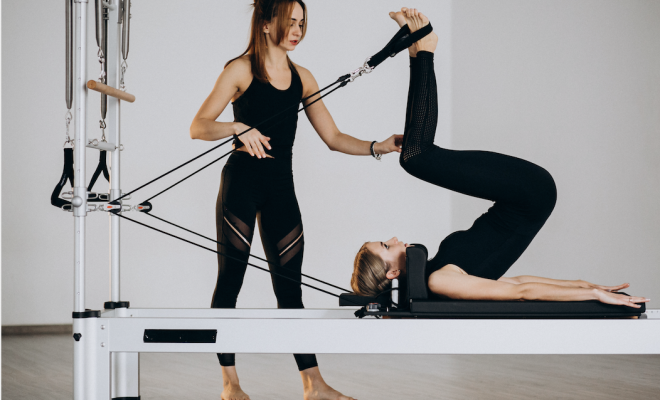
The Six Essentials Principles of Pilates
The Six Essentials Principles of Pilates
If you’re considering Pilates, you should know that Pilates stands apart from other types of exercise because of six essential principles. These six principles are the foundation of the Pilates approach to exercise and their application is what makes Pilates unique. If you are a Pilates beginner, your instructor is likely to go through them with you during your first class. Becoming familiar with them before you enter the Pilates studio may help you feel a little more confident.
The Pilates principles were not directly set by the creator of Pilates, Joseph Pilates. The principles are actually concepts extrapolated from his work. As a result, there is some disagreement about the order of the six principles, the specific wording and even the number of Pilates principles.
Joseph Pilates called his work “Contrology” originally, considering it to be a mind/body/spirit approach to body movement. Whether you’re working out on a mat at home or at Pilates studio beginner class, these principles will imbue each exercise with intention.
The six principles of centring, concentration, control, breath, precision, and flow are considered the foundation of the Pilates approach. So, here we’ll explore in a little more detail the six essential principles of Pilates.
1. Centring
This is a concept based on bringing focus to the centre of the body physically. This is the powerhouse area that sits between the pubic bone and lower ribs. All the exercises will then be sourced from this centre of energy.
2. Concentration
When you bring full attention to Pilates exercises and complete them with full commitment, you will be able to obtain maximum value from every movement. For this reason, Pilates classes tend to be very sedated to allow each participant to relax and concentrate on each movement.
3. Control
Every Pilate’s exercise needs to be performed with complete muscle control. The exercises are done with deliberate mindful movement control.
4. Breath
Joseph Pilates developed this form of exercise with an emphasis on using a very full breath in each movement. He advocated imagining the lungs like bellows, so you can strongly pump air in and out of your body. Most of the exercises and movements in a beginner Pilates class will coordinate with your breath, so you need to use your breath properly as an integral part of the exercise. Your instructor will guide you through this process. Ideally, learn and prepare to become aware of your breathing throughout the class.
5. Precision
In Pilates’ precision principle, is to execute one exercise with deliberate exactitude. This far weights completing repetitions with incorrect form. In Pilates, there is an appropriate placement, alignment relative to other body parts, and trajectory for each part of the body in every exercise.
6. Flow
Finally, Pilates exercises are performed in a flowing manner. Ease, grace, and fluidity are the goals of each exercise. The energy of Pilates is based on connecting all your body parts to flow through your body. Even Pilates equipment such as reformers is designed to highlight flow and concentration. They will bang around if you lose control and flow.
If you’re considering Pilates for beginners, you should speak to us. We offer a variety of beginner Pilates classes, and the Kaya Health team would be delighted to answer any of your questions.
Photo by Senivpetro @ freepik














